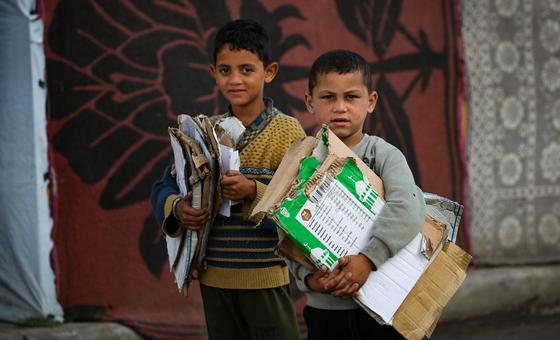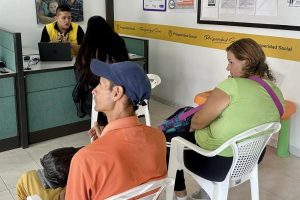Eight months after the outbreak of the war between Israel and Hamas in Gaza, the ILOthe UN labor agency, reported on Friday in its report The situation of workers in the Occupied Arab Territoriesthat unemployment is approaching a staggering 80% and describe the ins and outs of this situation and the broader economy outside of Gaza and the West Bank.
Ahead of its publication, the UN agency’s director general, Gilbert Houngbo, told the 112th International Labor Conference in Geneva on Thursday that Gaza’s labor market had “literally collapsed” since the “horrible” attacks led by Hamas against Israel last October, triggering Israel’s “relentless war.”
“Today Gaza is in ruins. Livelihoods are destroyed and work is scarce. Labor rights have been decimated,” he said. “This has been the hardest year for Palestinian workers since 1967. Never before has the situation been so grim“.
The authors of the report They also warn that families are now sending their children to work just to survive.
Hard data
Although not directly affected by the war, the occupied West Bank has also been severely affected by the crisis, with almost one in three unemployed, according to data compiled by the ILO and the Palestinian Central Bureau of Statistics.
The average unemployment rate is 50.8% in the two areas of the Occupied Arab Territories, however, the real figure is probably even higher, as it does not include people who have left the workforce due to lack of opportunities. , indicates the report of the UN agency.
Unsurprisingly, overall economic output in Gaza has contracted by 83.5% and in the West Bank by 22.7% in the past eight months, while the economy of the Occupied Territories has contracted by almost 33%.
Advances in healthcare
On Friday, the World Health Organization (WHO) said that despite “significant difficulties,” a fully loaded truck and a partially stacked trailer with medical aid had arrived in Gaza through the southern Kerem Shalom border crossing.
“Supplies will be distributed to health facilities to support the treatment of up to 44,000 people,” the UN health agency announced in a post on X.
The aid includes treatments for non-communicable diseases such as hypertension and heart conditions, type 2 diabetes and chronic respiratory diseases, but much more relief is urgently needed through the still closed Rafah border crossing, the WHO insisted.
In another update, the WHO reported that since October 7, 464 attacks against healthcare have been documented in the Gaza Strip.
“The attacks have caused 727 fatalities, 933 injuries, and have affected 101 health facilities and 113 ambulances,” the World Health Organization (WHO) reported in another post on X.
“37% of the attacks occurred in Gaza City, 23% in the northern Gaza Strip and more than 28% in Khan Younis.” “WHO calls for respecting international law and actively protecting civilians and healthcare.”
Rafah
In Rafah, fewer than 100,000 people now remain in the southern governorate, the Office for the Coordination of Humanitarian Affairs from the ONU (OCHA).
This is due to the forced evacuation of “close to a million people, who were again fleeing” and heading towards Khan Yunis and Deir al Balah, OCHA said, adding that ongoing hostilities had massively disrupted aid delivery. vital.
The cessation of fuel deliveries through the Rafah border crossing from Egypt had multiple negative ramifications, the UN aid office explained, affecting “trucks, hospitals, sewage systems, desalination operations and bakeries.”
“As things are, aid convoys continue to navigate active hostilities, barely passable roads, unexploded ordnance and recurring delays”, noted OCHA.















Add Comment